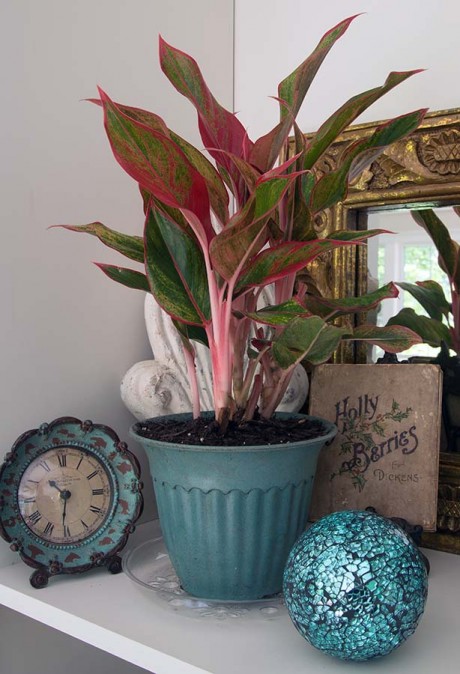Chinese Evergreen Aglow
Plus Garden To Do’s for December and January
By L.A. JacksonThe common Chinese evergreen (Aglaonema sp.) is as advertised: A green speckled or striped houseplant that can provide modest interest to almost any indoor room. But if you are looking for more visual sizzle, consider a dazzling oxymoron that is the red Chinese evergreen.
Generally available in garden centers and big box store nurseries going by various cultivar names such as “Siam,” “Aurora,” “Crete” and “Black Cherry,” this crimson-tinged beauty is not only suitable for the current red-and-green-scheme of the Yuletide season, but it can be a dependable, eye-catching indoor accent for the rest of the year as well. As a bonus, Chinese evergreens (either red or plain green) are often found on top 10 lists for houseplants that are extra effective in filtering indoor pollutants.
And the red Chinese evergreen is one tough plant. This perennial is easy to grow and will do well even in low-lit areas — actually, the only place not to put it is in direct sunlight. For the best color and a fuller shape, however, a bright room with windows facing a northern or eastern exposure is ideal. This attention-getter will also do well in strong artificial light, such as is typical in an office setting.
Although this tropical Far East native will tolerate dry indoor conditions, occasionally misting the leaves makes it happier. Keep the soil moist but not soggy, which means when the top half inch of the dirt is dry to the touch, it’s time to water. Adding a diluted quality houseplant fertilizer solution about every two months is another good maintenance practice. Its pruning requirements are simple: See a spent leaf, snip it. Finally, this slow-growing plant only needs to be repotted every two to three years.
As pretty as red Chinese evergreen is, look but don’t eat. In other words, it is not the kind of plant that should be in reach of inquisitive kids or pets because, like many other houseplants, its leaves are toxic in a tummy, so be sure it is placed in a safe, out-of-reach location.
Garden To Do’s
December
- Smooth-leafed, indoor plants such as rubber plant, dracaena and philodendron will benefit from occasionally having their leaves wiped with a moist cloth to remove dust, which interferes with their photosynthesis process.
- When pruning a large branch, always undercut a third of the limb before finishing sawing from the top. This will prevent it from splitting and tearing away bark from the main trunk.
- Any leftover pots that will be used next spring for plants or starting seeds need to be sterilized. Wash and let them soak for 30 minutes in a solution of one part bleach and ten parts water, and then allow to air dry before storing for the spring.
January
- While researching vegetable and ornamental varieties to try in this year’s garden, consider not only disease- and insect-resistant plants but also drought-tolerant selections.
- Lots of lawn to mow? While the grass is dormant and relatively easy to remove or till under, consider enlarging flower beds and natural areas to tame the trouble of too much turf.
- Inspect houseplants periodically for signs of insect activity such as eggs or damaged leaves and dispatch any unwanted invaders before they can become a full-blown infestation.
-
Share this story:



